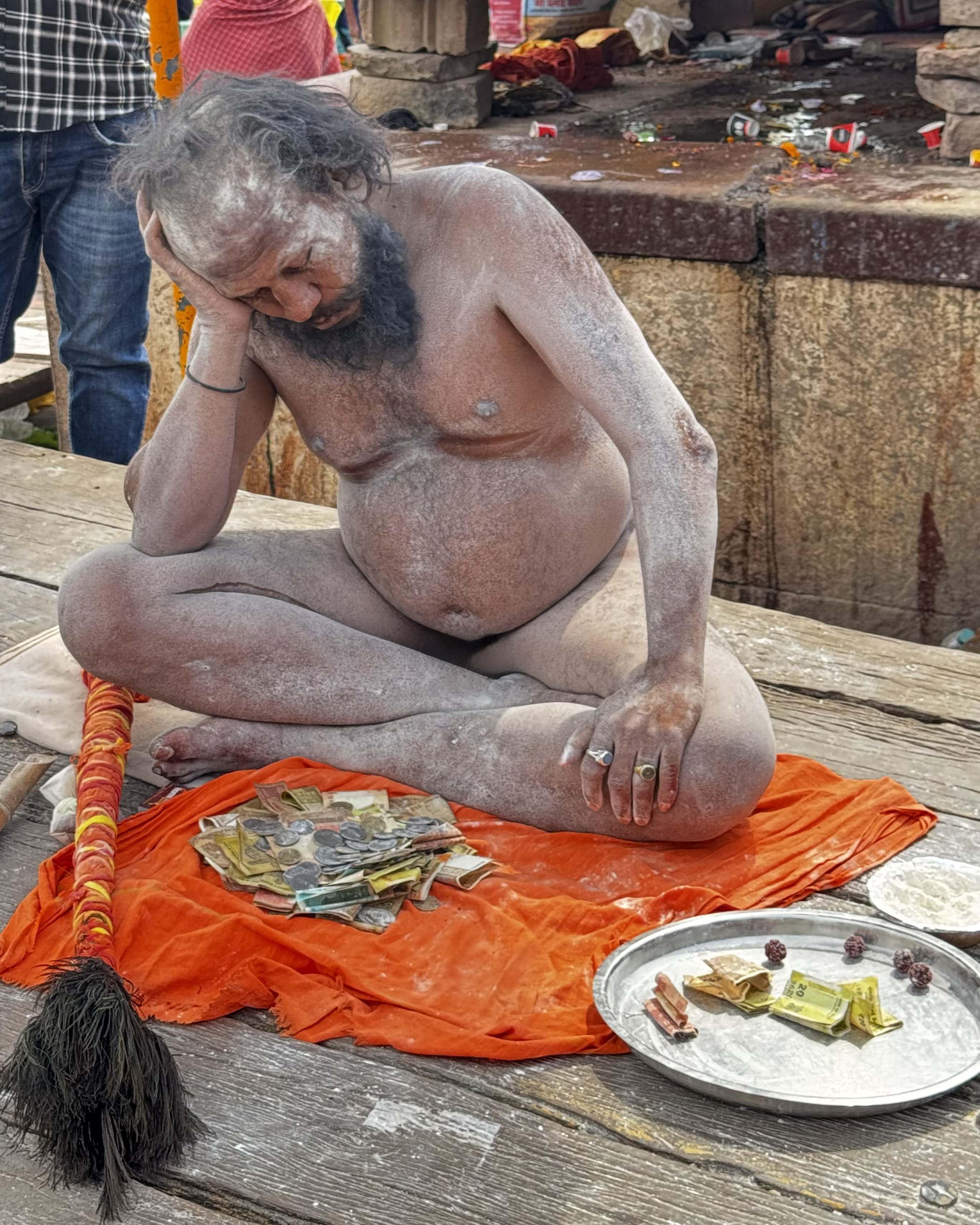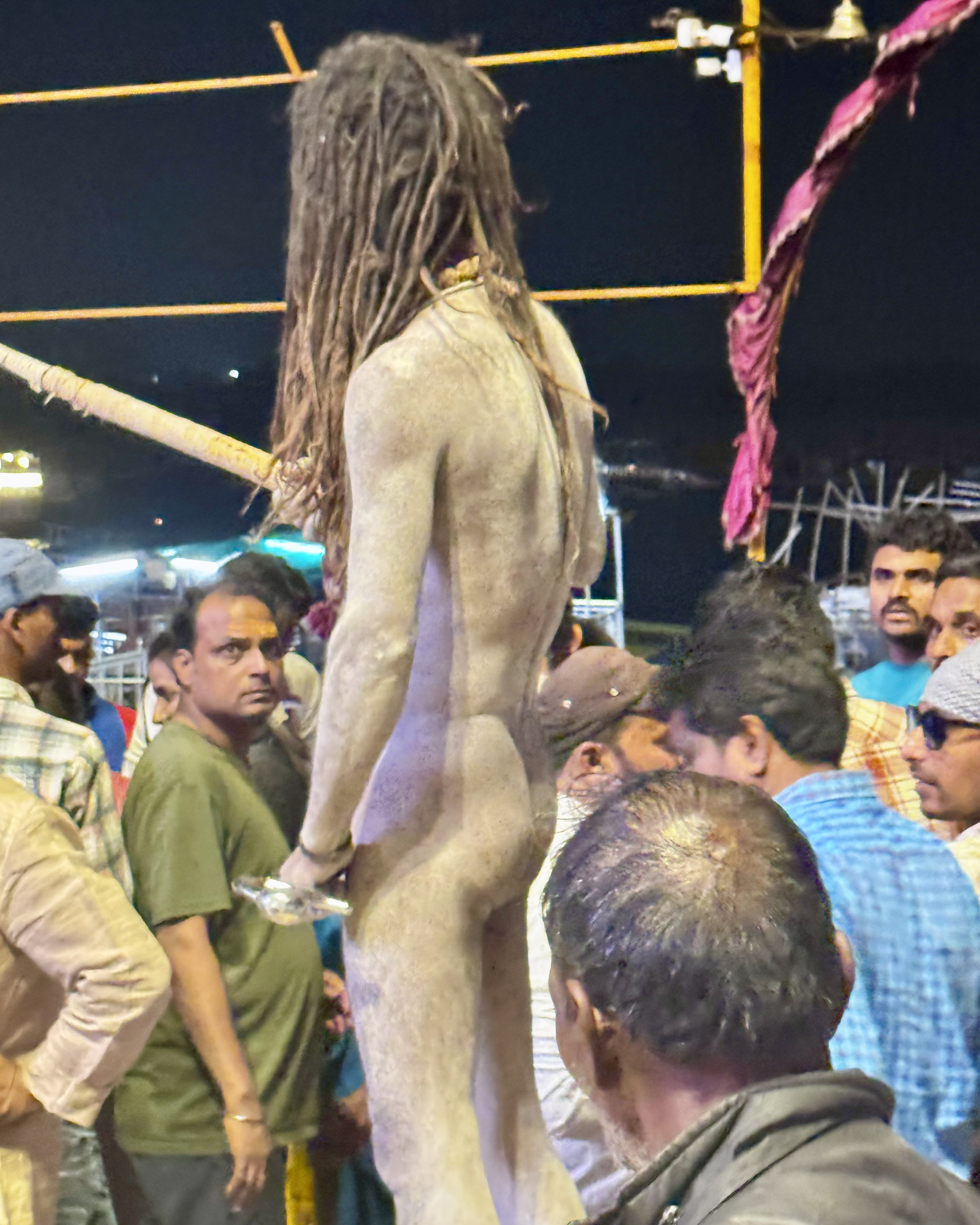At the Edge of the Sacred, Aghori Sadhus
Aghori Sadhus – Shadows of Varanasi
By Vivienne Gunning
Content Warning: Sensitive Material & Disturbing Images. This blog contains descriptions and photographs of Aghori Sadhus in Varanasi, whose practices may be considered extreme or unsettling. The images are real, unfiltered, and reflect a raw and honest experience. Some readers may find the content disturbing. Viewer discretion is advised.
Arriving in Varanasi during a major Hindu festival was an overwhelming experience. The city didn’t just hum with life—it vibrated with contradiction. Here, life and death aren’t separate—they’re layered on top of each other, colliding in every corner of this ancient city.I wandered through the narrow lanes, stepping over quiet bodies wrapped in ragged, dirty blankets (or not even that), past passive beggars with hollow eyes, waiting for life to slip from their frail frames. Death felt close. Around every corner, every staircase—I could see it, I could smell it. The transience of life on earth wasn’t hidden or sanitised—it was part of the everyday rhythm
Life and Death Entwined
The cremation ghats pulsed with both ritual and resignation. The air was thick with smoke from the funeral pyres. Just metres away, life went on: chai sellers shouted over the din, children laughed and played, cows and goats chewed sacred marigold garlands, and pilgrims bathed in the holy waters of Mother Ganges. Life goes on—a truth I still can’t quite name.
Into the Shadows
As the late afternoon shadows stretched over the ghats, I gathered the courage to walk deeper into the labyrinth of Varanasi’s spiritual core, letting life next to the River Ganges absorb me. No one seemed to notice me—I was just another figure, another silent observer in a place where life had too much urgency to be curious about outsiders.
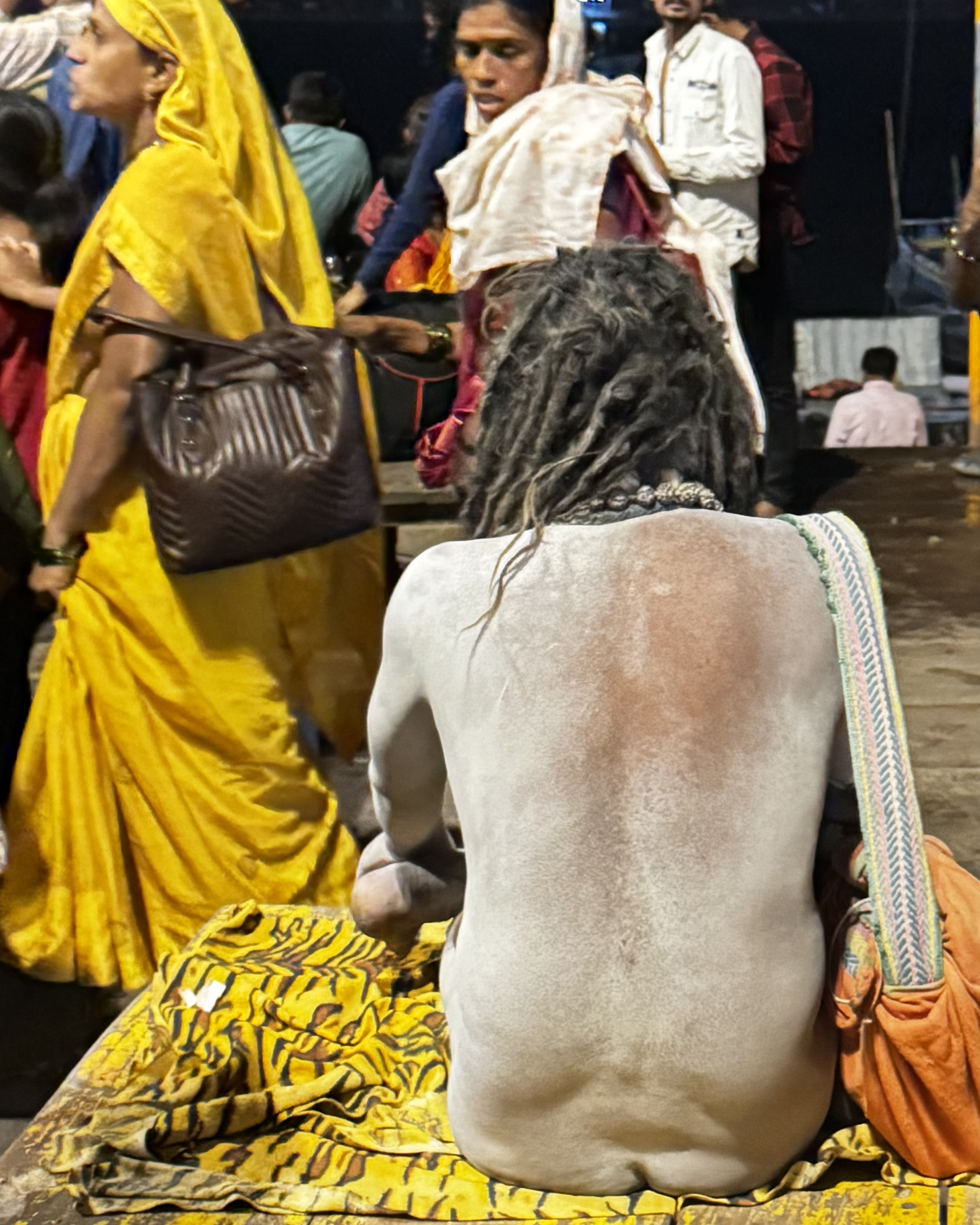
Then I saw them. My first encounter with the Aghori Sadhus.The smell of cannabis is usually a sign they’re nearby. And then, ash-covered figures began to appear around every corner—their stark white bodies glowing in the deep orange light of sunset. They sat cross-legged, silent, their gaze locking onto mine. Their eyes held you. I realised instantly—this was something beyond my understanding.I approached one slowly, hands open, respectful. With a slight nod, he acknowledged me—just another soul passing through. I was the tourist; we didn’t speak the same language, but communication unfolded through gestures. I offered a small donation and asked, through signs and simple words, if I could photograph him. (Please note: I did this with every photograph I took of the Aghoris.) His acceptance came without hesitation.In that moment,
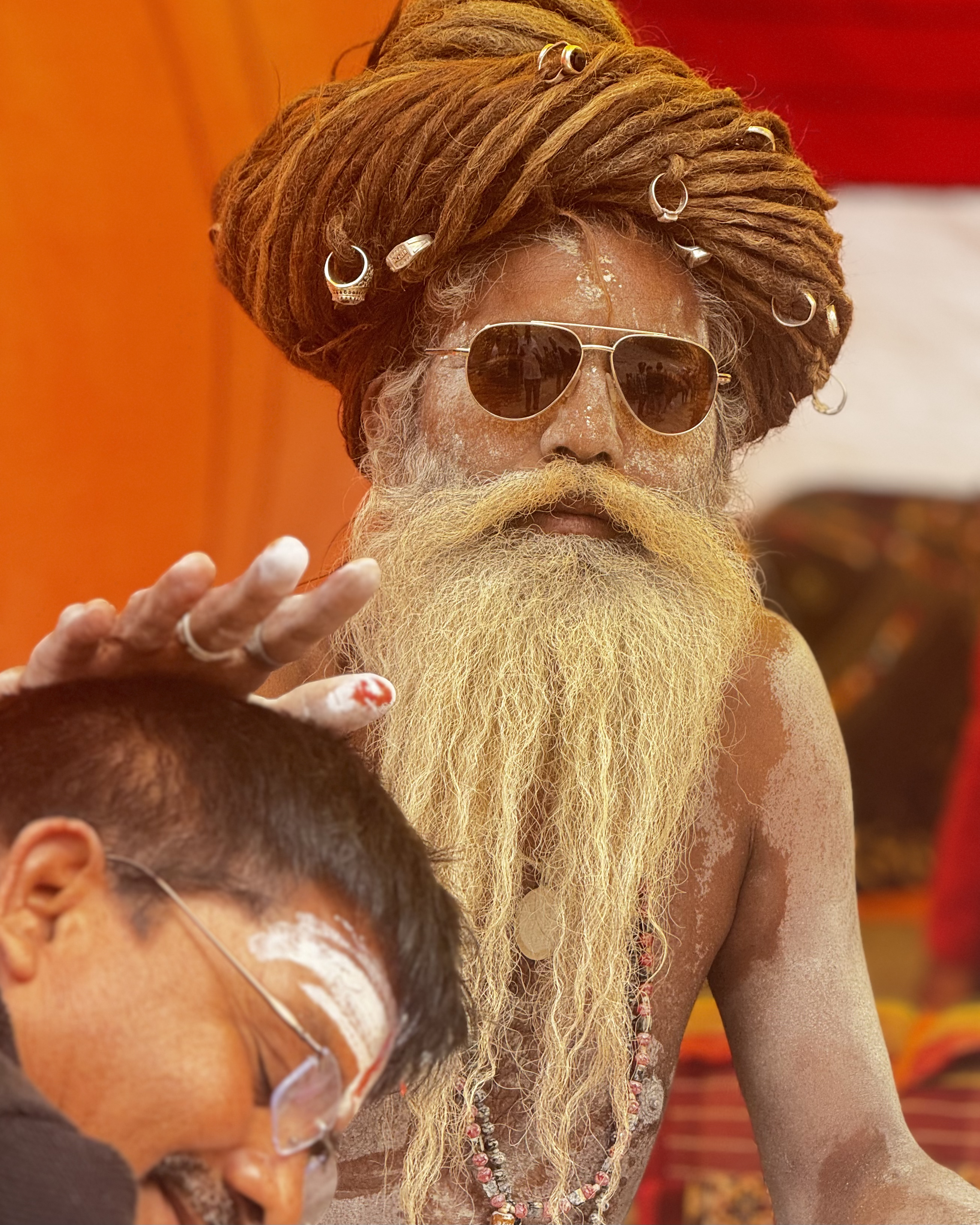
I felt the weight of responsibility: to portray this not as spectacle, but as truth. A truth stripped bare, unapologetic, and unafraid.
I strolled on. There were several of them—emerging from dark corners, some seated, some standing in silence, eyes intense and unmoving. Their nudity, initially jarring, soon faded into insignificance.I had just become comfortable with their nudity…
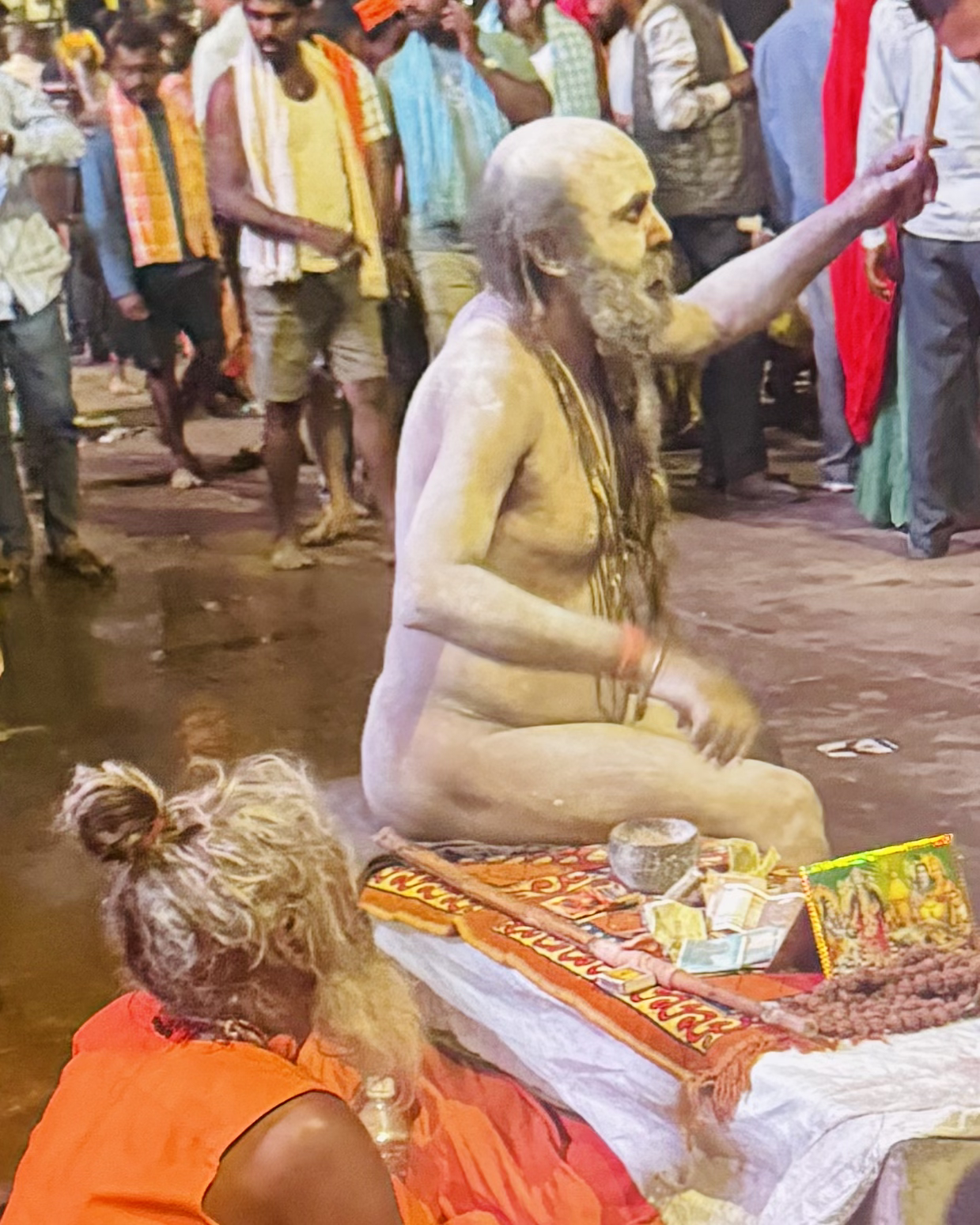
One stood up.
And then—a shock to my senses. In a moment of surreal disbelief, he began to roll his penis up onto a metal rod.I froze. My mind couldn’t process what I was seeing. A mix of fascination, discomfort, and disbelief hit me all at once.Was this a ritual? A statement? A challenge to everything I thought I knew?
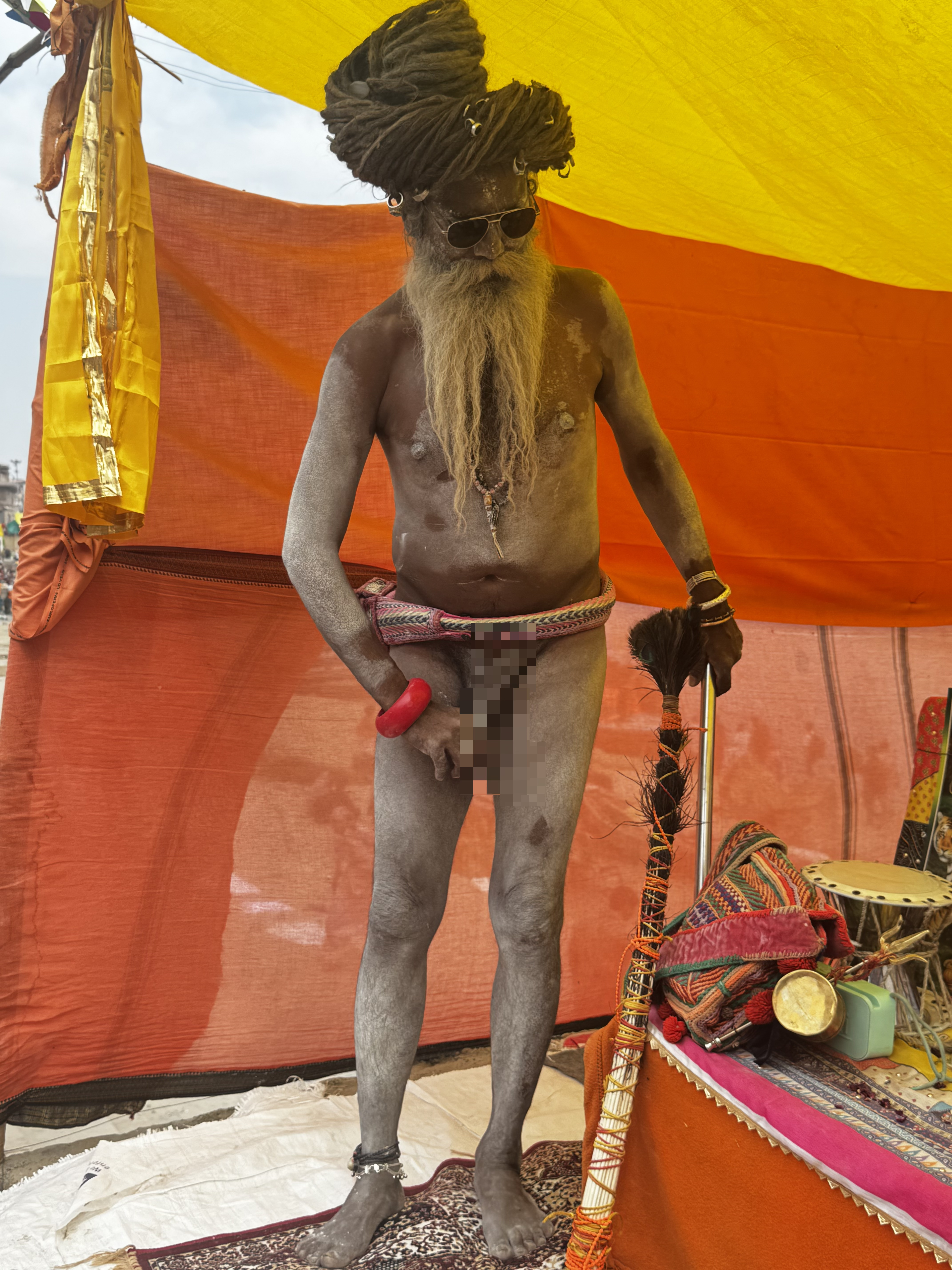
I turned and left—heart pounding—back to the sanity of my guesthouse, where questions churned through my mind.Who Are the Sadhus?That night, I barely slept. I researched obsessively.Sadhus are Hindu ascetics who renounce all worldly life in pursuit of moksha—spiritual liberation. They live without possessions, roaming from one holy site to another, meditating, praying, and following intense spiritual disciplines.But the men I saw weren’t ordinary Sadhus. They were Aghoris.
What sets Aghori Sadhus apart?Aghoris are followers of Shiva, but unlike other Sadhus, they worship him in his most terrifying form—Bhairava, the Lord of Annihilation. While most Shaiva Sadhus seek purity and austerity, Aghoris deliberately embrace the impure. They meditate in cremation grounds, eat rotting food, drink from human skulls, and in rare ritualistic cases, even consume human flesh.Why? Because they believe that transcending fear, revulsion, and societal norms is the fastest path to spiritual freedom. I struggled to comprehend.
Why the Ash?Their signature white appearance is deeply symbolic. Ash is the final form of all matter.1. Ash is Shiva’s cloak – Representing destruction and rebirth.2. It reminds them of mortality – The body is temporary; the soul eternal.
Where to Find Aghori Sadhus in Varanasi• Manikarnika Ghat – Varanasi’s most sacred cremation ground.• Hidden Shiva shrines – They prefer quiet, secluded spaces.• Kumbh Mela – A rare festival where many emerge from solitude.
My Conclusion:
Three are three types of Sadhus in Varanasi. To me, the difference between them is extremely blurred. Are they not all basically the same?
1. True Aghori Sadhus• Live in cremation grounds• Rarely interact with outsiders• Follow strict, radical spiritual practices.
2. Naga Sadhus & Other Ascetics• Seen at Kumbh Mela• Naked, ash-covered, often engage in extreme disciplines• Some are genuine renunciates; others blur into performance
3. Commercial Sadhus (The Most Visible Ones)• Sit in tourist areas• Use props, act theatrically• Ask for money or photos in exchange for blessings
Cannabis, Control & Ritual Shock
Many Shaivite Sadhus, including Aghoris, use cannabis as a tool for spiritual detachment. They believe it aids meditation and connects them to Shiva.As for the shocking genital rituals—these are sometimes used to demonstrate total control over the physical body, detachment from pain, and freedom from desire.
If You Would Like to Photograph the Aghoris: My Recommendations—Respect is Key
1. Engage First – Ask, don’t snap.
2. Be Prepared to Pay – Many now expect money.
3. Seek Authenticity – Wander beyond the main ghats.
4. Avoid Staged Performances
Final Reflection: Beyond the Ash and Smoke
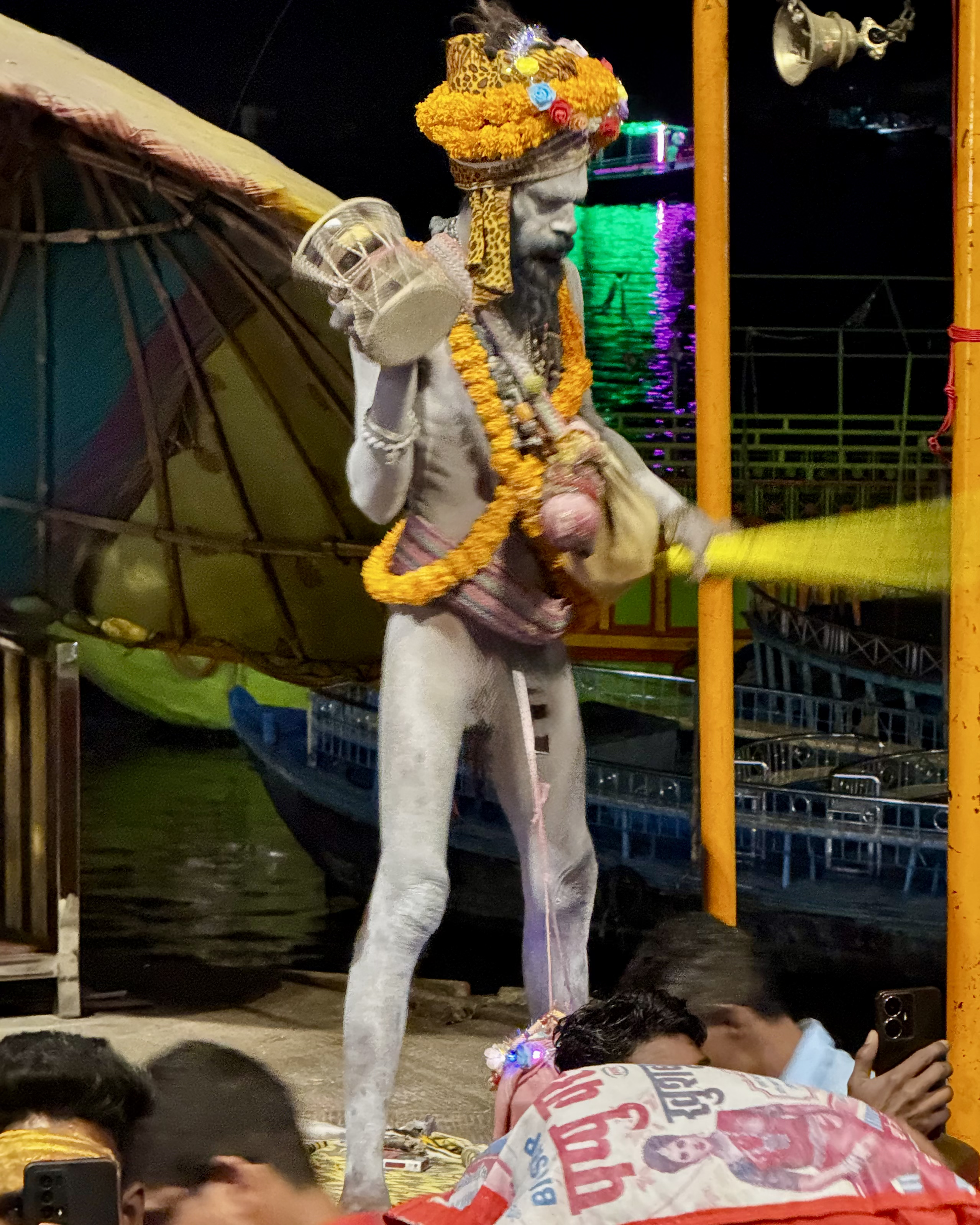
The Aghori way of life is not about spectacle. It’s about confronting the very things we fear—death, decay, the breakdown of ego. Sometimes, it felt forced. And perhaps, it was.While many Aghoris today exist more as performers than practitioners, their philosophy is rooted in something profoundly challenging: the belief that everything—pure or impure—is divine. I struggled to comprehend this. What I saw felt more theatrical than spiritual. The Aghoris I encountered didn’t feel like holy men. They wore sunglasses, smoked openly, posed theatrically, demanded money, and even tried to pull me in for photos.It felt like spiritual cosplay—a performance staged for tourists. (But there weren’t many international tourists…)
What I saw in Varanasi shocked me, unsettled me, and left me forever changed.But isn’t that the essence of travel?To step outside comfort.To stand in the presence of the unfamiliar.To witness something that forces us to rethink everything we thought we understood.
